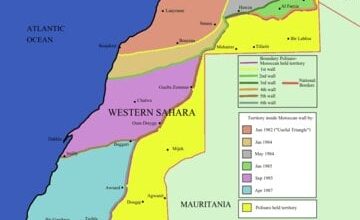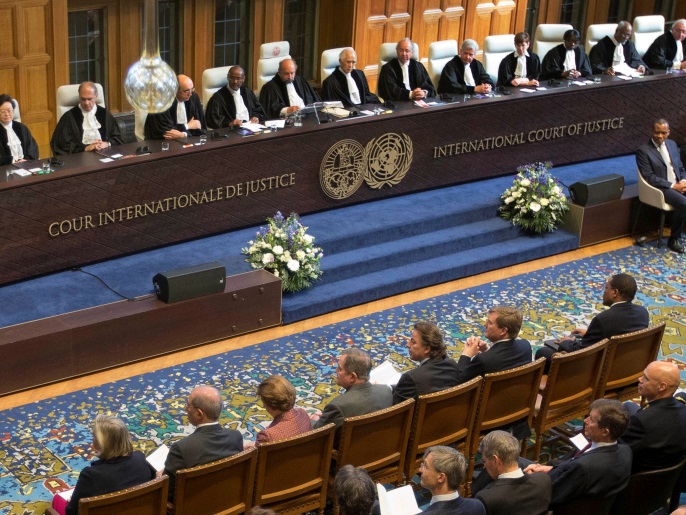The one-state solution in the Israel-Palestine conflict boils down to institutionalizing the status quo. Only a two-state solution is desirable.

The one-state solution in the Israel-Palestine conflict boils down to institutionalizing the status quo. Only a two-state solution is desirable.
Yet, the current one-state reality is a situation of apartheid for Palestinians in the occupied territories. Israeli Jews and Palestinians do not have the same civil and political rights. The balance of power is dominated by Israel, as the Palestinian state is now just a shadow of what it once was. This situation is unlikely to change in the future: the one-state, two-nations reality would most likely be an Israeli state monopolizing force. Hence, the impression is that in arguing for the one-state solution, experts abandon hope for mere fatalism, legitimizing the status quo by default. How can one accept the current situation when Palestinians are being oppressed and deprived of their political and civil rights.
Legitimizing the one-state solution is legitimizing a reality akin to apartheid for Palestinians. The one-state solution is a renunciation disguised as a solution, and it is doomed to fail.
A one-state solution would result in a failed democracy. The apartheid-like situation in the disputed territories will not change if a single Israeli state is implemented. Life in the Occupied Palestinian Territories (OPT) and East Jerusalem is characterized by the segregation of Palestinians, as “discrimination based on religious and ethnic identity is legal under Israeli law.” Such a situation is the very definition of apartheid. Palestinians in the OPT do not hold the same rights as Jewish citizens, and Palestinians in East Jerusalem are “permanent residents,”, a status that can be revoked at any time at the discretion of Israeli officials. Israel’s 2018 Nation-State Law further downgraded the status of non-Jewish Israelis, holding that the right to self-determination in the State of Israel “is exclusive to the Jewish people,” without mentioning equality of rights for Palestinians or democracy. Thus, inequality is enshrined in law and in everyday practices. Arabs did not have freedom of movement from 1948 to 1966, and still face restrictions on buying property and choosing where to live, among other unequal economic and social rights.
There are no guarantees that Israel will stop these practices in a one-state scenario. Experts theoretically expect full equality between Palestinians and Israelis in a joint state, yet recognize that “it is more likely that Israel could pick and choose what it implements.” Should we be so defeatist as to let the status quo reign? Delivering the Palestinians from Israeli domination will only come with a complete separation from the Israeli state.
The same territory cannot be shared simultaneously by Israelis and Palestinians, who both have rightful claims to the land, but have proved to be unable to live together peacefully. The two-state solution has been advocated by the international community for decades and resulted in several rounds of negotiations between Israeli and Palestinian officials involving international mediators. Although these attempts did not succeed, they have established plenty of strong bases for further development. The 1947 UN Partition Plan designed a two-state solution, with each state having a majority of its own population: 56% of the territory being a Jewish state, 43% a Palestinian state, and Jerusalem and Bethlehem designated as international zones. The 1993 Oslo Agreement was not a two-state plan, but a plan for the separation of areas of “dense Arab settlement” from Israel’s domination. Its failure consequently did not mark a dead end for the two-state solution, but strengthened the need for a two-state partition plan. The 2003 Geneva Initiative designed a permanent status agreement by creating two separate states, which would end armed conflicts, fix borders, and bring solutions to the refugee problem. The 2016 John Kerry Parameters further reinforced this plan by creating empirical steps for a two-state solution to be implemented. Both countries have been close to sealing an agreement many times, yet Israel has become less cooperative as religious nationalism has risen.
What is needed now is for Palestinians to unify for the cause, for Israelis to recognize its ethical benefits, and for the international community to continue pressuring both parties into accepting the two-state solution, for it is the only fair, equitable, and feasible alternative to the current situation. There is no room for practicality in this conflict. Only ethics matter. We are talking about five million Palestinians in the Occupied Territories and 350,000 in East Jerusalem. They deserve equal rights, true citizenship, and true democracy. Maintaining and legalizing the status quo through a single Israeli-dominated state is a lovely euphemism for throwing the entire Palestinian population into a lion’s den and letting NGOs take care of the ensuing humanitarian crises. Israel dominates the balance of power with Palestine and cannot be tempered by either neighbors or international powers—it will maintain the Jewish Israeli/Palestinian Israeli divide if a single Israeli state is created.
Although the two-state solution has not been successful yet, it would be deeply unwise and frankly dangerous to abandon the search for a solution. However, this is what the one-state proposal argues for: a strikingly and openly pessimistic absence of a solution. It will do nothing but maintain the status quo, letting the two nations pursue their fratricidal war inside a single state. Secretary Kerry helped lay a very strong basis for future negotiations between the two countries. There is light at the end of the tunnel.

Adrien Daniere is an undergraduate student in Political Economy at the University of California, Berkeley, with a focus on Middle East conflict studies.




